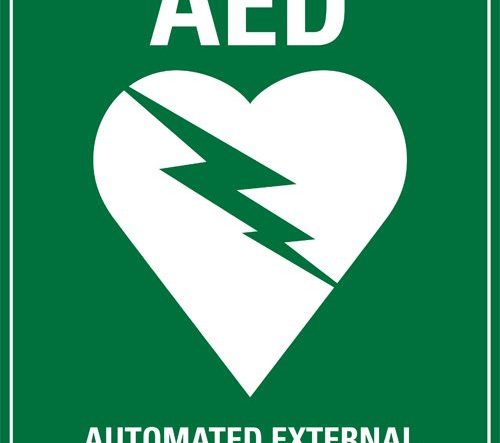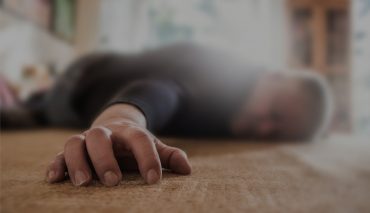If you’re trying to help someone survive an out-of-hospital cardiac arrest, you need an AED – that is, an automated external defibrillator.
When the pads of an AED are applied to the bare chest of someone who has collapsed, is unresponsive and is not breathing normally, it will automatically detect if an electrical shock is required to help their heart resume its normal rhythmic beat.
If so, the AED will apply that shock, giving emergency services more time to arrive on the scene.
Defibrillation and CPR need to happen within minutes of experiencing an out-of-hospital cardiac arrest (OHCA) if the patient has a chance of survival. The fact that as few as below one per cent of out-of-hospital cardiac arrest patients survive, demonstrates how infrequently this happens.
A community first responder has only moments to assess the situation and start the steps in the sudden cardiac arrest Chain of Survival. In those moments, how do they get their hands on the life-saving equipment they need, an AED?
Call
The first step in the Chain of Survival is to call emergency medical services (EMS).
Many such services maintain maps of public access defibrillator (PAD) networks. Once the EMS operator knows the caller’s location, they may be able to point them toward an AED nearby.
Look
If in public, look around for an AED sign. These are typically green, marked AED and showing an image of a white heart split by a lightning bolt.
In public places like shopping centres, public buildings, sporting facilities, gyms and transport stations, AEDs should be accessible 24 hours a day. They’re typically contained in a cabinet that hopefully, is unlocked.
Ask
If EMS doesn’t know where the nearest AED is, and there isn’t one within line of sight, ask.
EMS will most likely advise the caller in this situation to commence CPR while another bystander heads off to find one, or asks someone who is likely to know the nearest location.
Search
Using Google to search “AED near me” will trigger a local map showing known AED locations.
While this map may not be comprehensive, it should prove a better alternative to giving up the search.
Be prepared
Wherever you are in the world, there may be a local service creating and sharing AED location maps.
For example:
- Ambulance services – many city and regional ambulance services make this information available, either online or in app form.
- Volunteer organisations – we’ve talked previously about the work GoodSAM does around the world to connect professional first responders with emergency locations, and make AED maps available for cities around the world. Another great example is PulsePoint’s AED registry app.
- Hashtags – using social media to search for your nearest AED using #FindAnAED and #AEDFound could help.
Of course, the best way to be prepared is to commit to, and maintain CPR training. The more people in our communities there are who know what to do in an emergency, the better the chances we all have of surviving an out-of-hospital cardiac arrest.



